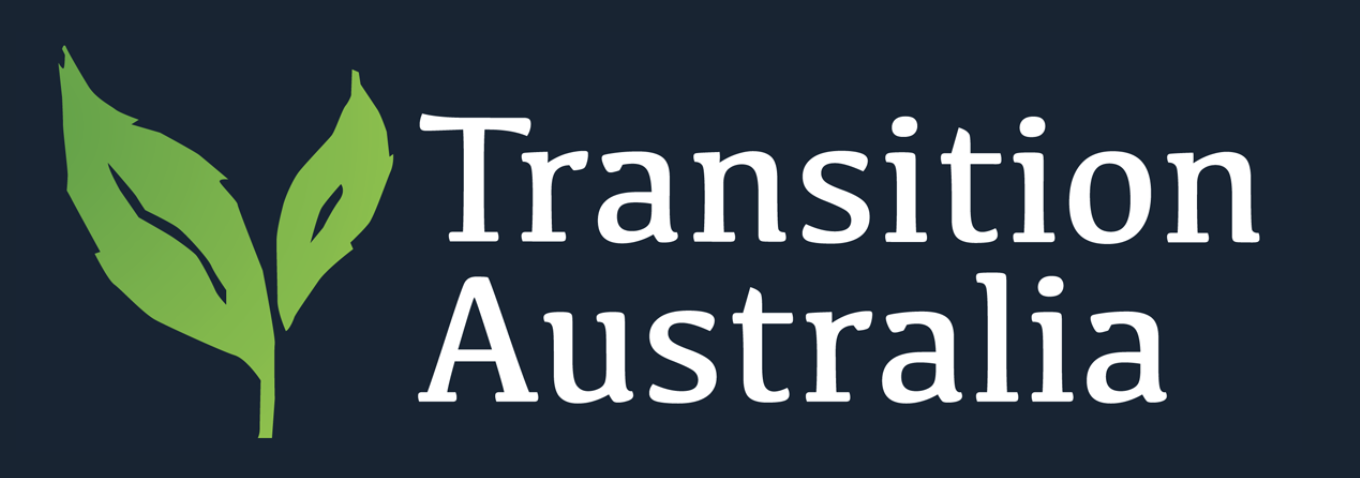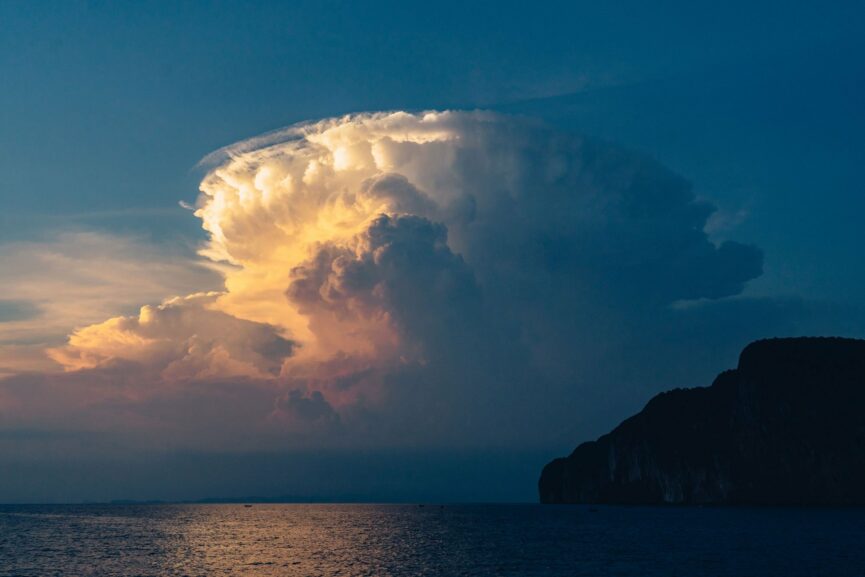You’ve no doubt heard of the IPCC Sixth Assessment Report, but hardly found time to read it, not even the summary, what with everything else going on in your life and in the world. And anyway where do you start? Mylene Turban, a member of Transition Bondi, has done all the hard yakka for us by reading the IPCC report and summarizing it for us. Thank you Mylene. This article was first published on the Transition Bondi website and we are offering it to you here, with some editing.
On the 9th of August 2021, the Intergovernmental Panel on Climate Change (IPCC) published the IPCC Working Group I sixth assessment report (AR6). The report addresses the most up-to-date physical understanding of the climate system and climate change. UN Secretary-General António Guterres, classified the report as a “code red for humanity”. Does it mean it is too late to do anything? Of course not! Let’s review why and more especially what you can do, no matter where you are up to in your climate or ecological journey.
What is the IPCC and what is the AR6?
The IPCC is an intergovernmental body of the United Nations mandated to provide objective scientific information relevant to understanding human-induced climate change, its natural, political, and economic impacts and risks, and possible response options. The IPCC does not conduct original research nor monitor climate change; rather, it undertakes a systematic review of all relevant published literature to provide a comprehensive update on climate change, its effects, and potential strategies.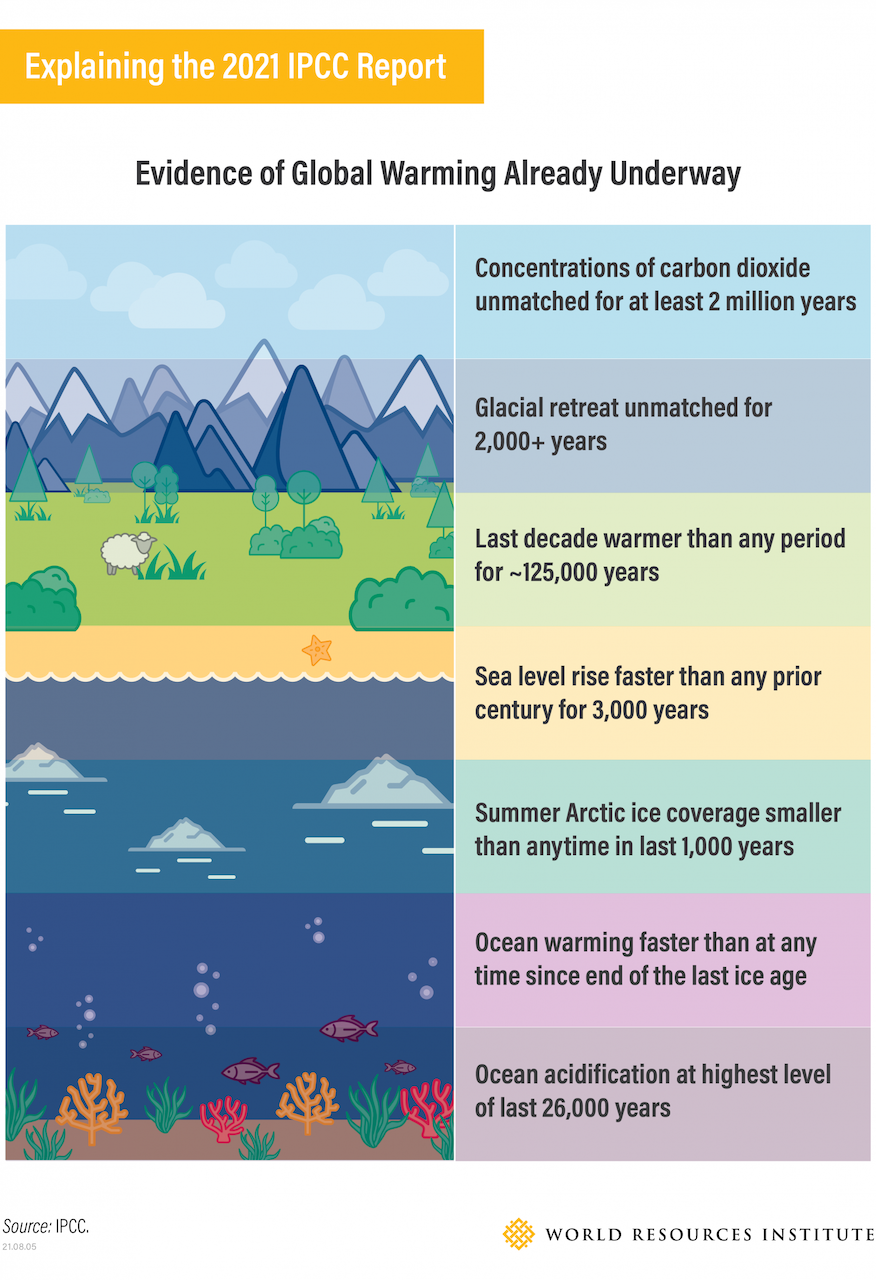
This AR6 summarises 14 000 scientific papers and was voluntarily written by 234 experts, who responded to 78 007 comments from government bodies and experts.
For this first volume, the focus is on the physical understanding of the climate system and climate change. There are three versions you can review (with a strong advice to start with SPM):
- Summary for Policymakers (SPM, 42 pages)
- Technical summary (TS, 159 pages)
- Complete report (3949 pages)
What does this report tell us? Where are we now and where are we heading?
The SPM will give you the full picture of what is the current state of the climate, what are the possible futures and how we can limit future climate change (including key numbers).
The current state of climate
- Human influence has (without any doubt) warmed the atmosphere, ocean and land. Widespread and rapid changes in the atmosphere, ocean, cryosphere and biosphere have occurred.
- 100% of global warming is due to human activities
- The magnitude of recent climate system changes and the current state of many parts of the climate system are unprecedented, from centuries to thousands of years (CO2 concentrations, global surface temperature, sea level rise, ocean acidification, etc.)
- Human-induced climate change is already affecting many weather and climate extremes in every region across the globe, as seen in the last months across the world: heatwaves, heavy precipitation, droughts, and bush fires.
Possible climate futures
Global surface temperature will continue to increase until at least the mid-century under all emissions scenarios considered. Global warming of 1.5°C and 2°C will be exceeded during the 21st century unless deep and quick reductions in CO2 and other greenhouse gas emissions occur in the coming decades.
Many changes in the climate system become larger in direct relation to increasing global warming. They include increases in the frequency and intensity of hot extremes, marine heatwaves, and heavy precipitation, agricultural and ecological droughts in some regions, and proportion of intense tropical cyclones, as well as reductions in Arctic sea ice, snow cover and permafrost.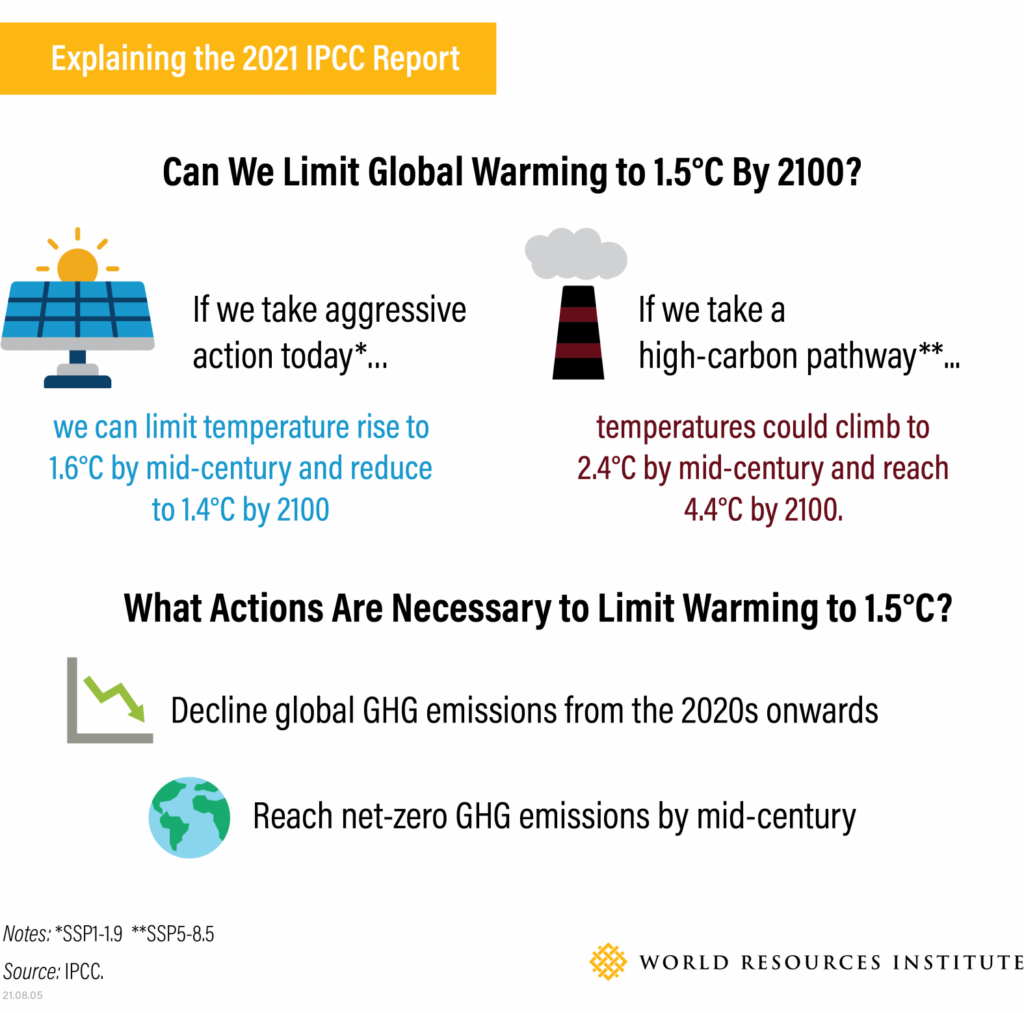
Continued global warming is projected to further intensify the global water cycle, including its variability, global monsoon precipitation and the severity of wet and dry events.
If CO2 emissions continue to increase at the current scale, the ocean and land carbon sinks are projected to be less effective at slowing the accumulation of CO2 in the atmosphere, meaning more CO2 will accumulate into the atmosphere.
Any changes due to past and future greenhouse gas emissions are irreversible for centuries to millennia, especially changes in the ocean, ice sheets and global sea level.
How will it look in Australia and other regions?
You can go through this 2 page factsheet for Australasia. There is also an interactive Atlas to look at other parts of the world and better understand that climate change manifests differently depending on where you live.
The impacts at +2℃ are much worse than at +1.5℃ . Each fraction of degree counts! And so every Greenhouse Gas emission we can prevent counts!
Limiting Future Climate Change
We need to reach net zero CO2 emissions as soon as possible (and preferably before 2050), along with a reduction in other greenhouse gas emissions (methane, nitrous oxide). Not only will it limit further climate change, but it will also improve air quality and the life of both humans, animals and all living species on Earth.
Now that you know, what can you do?
First, I would advise you to let the emotions and feelings submerge you. Express them in the way you wish and don’t try to hide them in a corner of your brain, that’s how you may not move towards action or feel too small to do anything. In my case, a long run or walk in nature listening to birds, looking at trees and plants, helps me to reconnect and feel that I am part of this beautiful planet, and I can’t close my eyes on what is happening.
Psychology for a Safe Climate offer valuable resources on climate distress and eco-anxiety, children and young people, active hope and much more.
Where are you on the wheel of emotions?
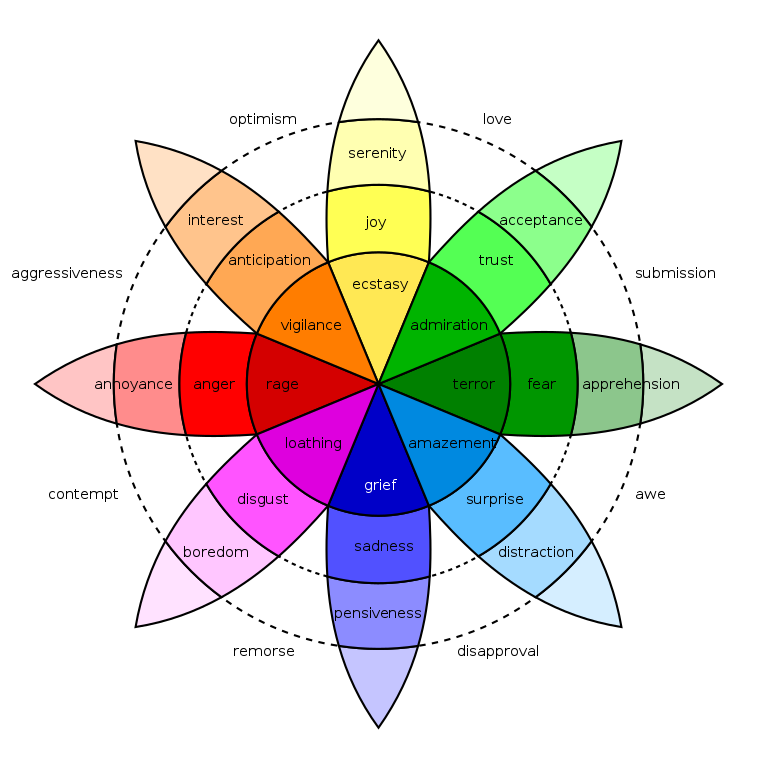
Source: commons.wikimedia.org
There are thousands of articles, podcasts, books, courses, videos etc, to follow. Once you start opening the climate box, you will then want to understand ecology, biodiversity, social justice, waste pollution, or even psychology. That’s why it is important to always remember why you start something, and where you want to go: What is your intention?
You could follow this framework of actions for climate change (which can be completed by what you will find in your research):
KNOW & MEET: train yourself on climate change and its challenges
- Participate in a Climate Fresk Workshop see https://climatefresk.org/workshops/
- Read AR6,I
- Climate Council Resources
- Drawdown Climate Solutions Course
LET OTHERS KNOW & ORGANISE: Sensitise
- Become a Climate Fresk facilitator
- Climate Conversations with Climate for Change
- support School Strike 4 Climate
- 350.org Australia
DO & ACT: Connect with neighbours and lifestyle change
- Start a Transition Streets group
- Check out Transition Australia’s Ecological footprint calculator
- One Small Step App
- Join a local environmental group or climate action group (Transition Australia and all the grassroots local groups would welcome you!)
REGENERATE: Boost your energy when needed
- Nature walk
- Meditation
- Family, friends, and community times
- Daily gratitude
- Growth mindset
We hope that this article clarified what you didn’t know about climate change and the latest IPCC report. But more importantly, we hope that you now feel empowered to either start or continue your climate (and more broadly your ecological) journey.
Featured image from IPCC – originally from Daniel Bernard via Unsplash
Mylene Turban, Transition Bondi, August 2021
